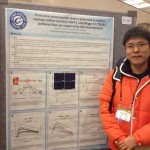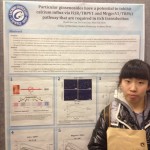Journal club 2013-03-05
Mrgprd enhances excitability in specific populations of cutaneous murine polymodal nociceptors.
Source
Department of Neurobiology, University of Pittsburgh, Pittsburgh, Pennsylvania 15261, USA.
Abstract
The Mas-related G protein-coupled receptor D (Mrgprd) is selectively expressed in nonpeptidergic nociceptors that innervate the outer layers of mammalian skin. The function of Mrgprd in nociceptive neurons and the physiologically relevant somatosensory stimuli that activate Mrgprd-expressing (Mrgprd(+)) neurons are currently unknown. To address these issues, we studied three Mrgprd knock-in mouse lines using an ex vivo somatosensory preparation to examine the role of the Mrgprd receptor and Mrgprd(+) afferents in cutaneous somatosensation. In mouse hairy skin, Mrgprd, as marked by expression of green fluorescent protein reporters, was expressed predominantly in the population of nonpeptidergic, TRPV1-negative, C-polymodal nociceptors. In mice lacking Mrgprd, this population of nociceptors exhibited decreased sensitivity to cold, heat, and mechanical stimuli. Additionally, in vitro patch-clamp studies were performed on cultured dorsal root ganglion neurons from Mrgprd(-/-) and Mrgprd(+/-) mice. These studies revealed a higher rheobase in neurons from Mrgprd(-/-) mice than from Mrgprd(+/-) mice. Furthermore, the application of the Mrgprd ligand beta-alanine significantly reduced the rheobase and increased the firing rate in neurons from Mrgprd(+/-) mice but was without effect in neurons from Mrgprd(-/-) mice. Our results demonstrate that Mrgprd influences the excitability of polymodal nonpeptidergic nociceptors to mechanical and thermal stimuli.
- PMID:
- 19571152
- [PubMed – indexed for MEDLINE




